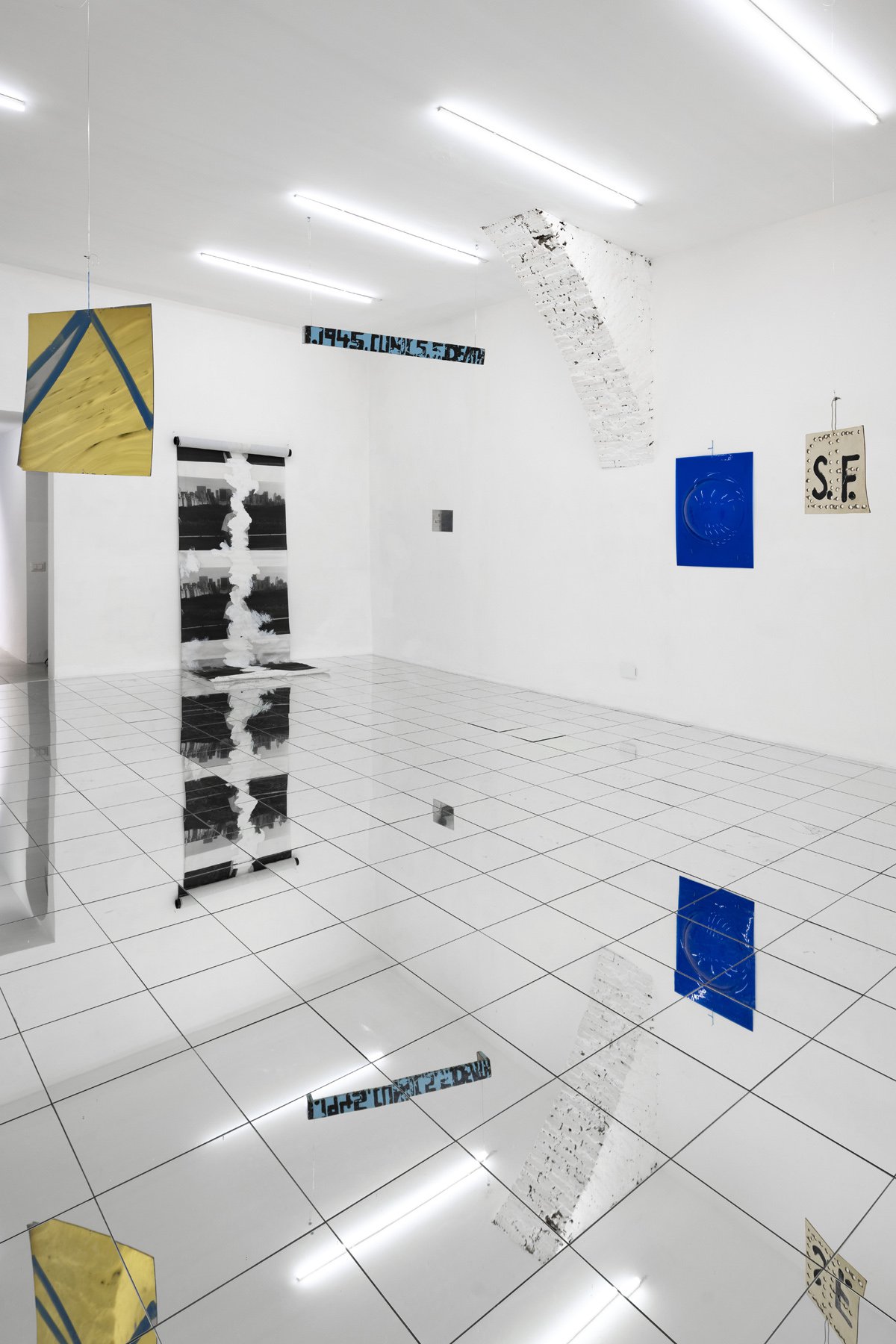Rome
Oꓘ⅃Iꟻ OИATƧ
Stano Filko
curated by Pia Remmers
September 21 – November 16, 2019

Stano Filko
Oꓘ⅃Iꟻ OИATƧ, 2019
Installation view
Layr, Rome

Stano Filko
Oꓘ⅃Iꟻ OИATƧ, 2019
Installation view
Layr, Rome

Stano Filko
Oꓘ⅃Iꟻ OИATƧ, 2019
Installation view
Layr, Rome

Stano Filko
Transcendency – Genie, ca. 1985
Acrylic paint, photo-print, canvas roll

Stano Filko
Intimacy - Self-Portrait - Filko, ca. 1970
Etching, aluminium sheet
30 × 20 cm

Stano Filko
From the series Astrocosmolonomogy, ca. 2000
Reflective plexiglass, acrylic paint
61 × 61 cm

Stano Filko
From the series Astrocosmolonomogy, ca. 2000
Reflective plexiglass, acrylic paint
61 × 61 cm

Stano Filko
1.1945.CLINIC.S.F.DEATH, 2000
Found object, acrylic paint, wood
11 × 123 × 18 cm

Stano Filko
Oꓘ⅃Iꟻ OИATƧ, 2019
Installation view
Layr, Rome

Stano Filko
Oꓘ⅃Iꟻ OИATƧ, 2019
Installation view
Layr, Rome

Stano Filko
Oꓘ⅃Iꟻ OИATƧ, 2019
Installation view
Layr, Rome

Stano Filko
From the series Female Breast I-X (Blue), 1966
Blue plexiglass
74.5 × 56.5 × 17 cm

Stano Filko
S.F.3.D., 1995
Hardboard, perforation, acrylic paint
30 × 30 cm

Stano Filko
Concept - Nothing at all, 1972
Felt pen and pencil on paper
50 × 70 cm

Stano Filko
Central Brain, 2000
Found objects, fabric, plastic, cord, wire
70 × 55 × 55 cm

Stano Filko
Oꓘ⅃Iꟻ OИATƧ, 2019
Installation view
Layr, Rome

Stano Filko
Oꓘ⅃Iꟻ OИATƧ, 2019
Installation view
Layr, Rome

Stano Filko
EGOQ, ca. 2000
Mixed media on paper
30 × 42 cm

Stano Filko
From the series KYBORGSF, ca. 2010
Xerocopy, perforation, felt tip, whitening liquid, pencil on paper
45.8 × 30.4 cm
Photos: Giorgio Benni
Stano Filko was born in 1937 and died in 2015. During his 78 years on earth, he supposedly experienced two clinical deaths. Filko’s intention was to reach 100 and live until 2037, 22 more years. But death was never absolute to him. He expected to move on to the next transcendent dimension of an eternal, infinite reality.
Still, Filko was clearly caught up in the external realities of his time, living through three starkly different political systems. He remained antipodal to each of them and created his very own system in his art: complex and paradoxical, it was based neither on politics nor morals, permanently surpassing itself, an infinite stream of consciousness.
Mirrors have been an essential element of Filko’s exhibitions and environments since his early days, both to transform the visitors into living sculptures and to create a physical surface for the projection of respective contemporary conditions. They also call to mind the mirror writing by Leonardo Da Vinci, or a visualization of a reversed reality.
A robot in the pose of le penseur, blurring the sense of time (and culture and marketing); a written self-portrait proclaiming intimacy; an empty concept proposal; a transcendent feminine breast; the artist’s brain, like a relic of his earthly remains. Is it still operating?